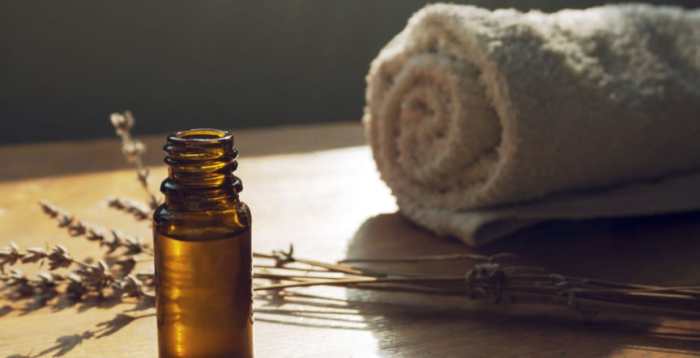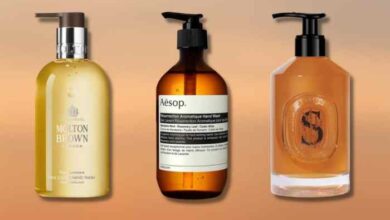
Make your own relaxing massage oil, and you’ll unlock a world of sensory bliss. It’s not just about creating a soothing balm for your skin, it’s about crafting a personalized experience that caters to your specific needs. Imagine yourself, after a long day, indulging in a massage with an oil you’ve carefully blended with calming essential oils like lavender and chamomile.
The aroma alone is enough to melt away stress, while the gentle touch of the oil melts away tension, leaving you feeling relaxed and rejuvenated.
This journey into DIY massage oils will guide you through the essential ingredients, offer unique recipe ideas, and provide safety tips for creating your own personal oasis of calm. We’ll delve into the world of essential oils, exploring their therapeutic benefits and how they can enhance your massage experience.
We’ll also discuss the importance of carrier oils, which provide the foundation for your blends, moisturizing and nourishing your skin. By the end, you’ll have the knowledge and confidence to create your own relaxing massage oil, tailored to your specific needs and preferences.
The Allure of DIY Massage Oils
There’s something undeniably alluring about creating your own massage oil. It’s a journey of self-discovery, a blend of science and artistry, and a gateway to a deeply personalized wellness experience. The act of crafting your own oil empowers you to take control of your well-being, tailoring the ingredients to your specific needs and preferences.
The Benefits of DIY Massage Oils
The appeal of DIY massage oils goes beyond the mere act of creation. It’s about the benefits that come with it. Here’s a glimpse into the advantages of crafting your own massage oil:
- Ingredient Control:You have complete control over what goes into your oil, ensuring it’s free from synthetic fragrances, preservatives, and potentially irritating additives. You can select natural, organic ingredients that align with your sensitivities and preferences.
- Personalized Experience:Every massage oil is unique, reflecting your individual needs and desires. You can customize the blend to address specific concerns, such as muscle tension, dry skin, or even emotional well-being.
- Sensory Delight:Creating your own massage oil is a sensory experience. The aromas of essential oils, the textures of carrier oils, and the act of blending them together create a soothing and therapeutic atmosphere.
“A homemade massage oil is like a personalized potion, carefully crafted to nourish your body and mind.”
Essential Oils for Relaxation

Aromatherapy, the practice of using essential oils for therapeutic purposes, has gained significant popularity in recent years. Essential oils are concentrated plant extracts that offer a wide range of benefits, including promoting relaxation and reducing stress.
Calming Essential Oils
Essential oils known for their calming and relaxing properties can be incorporated into massage oils to create a soothing and therapeutic experience. These oils work by interacting with the olfactory system, influencing mood and promoting feelings of tranquility.
- Lavender:Widely recognized for its calming and sleep-promoting properties, lavender essential oil is known to reduce anxiety and promote relaxation. It has a sweet, floral scent that is often associated with peace and serenity. Studies have shown that lavender oil can improve sleep quality, reduce heart rate, and lower blood pressure.
- Chamomile:Chamomile essential oil is known for its calming and soothing effects on the mind and body. Its gentle, sweet scent is often used to promote relaxation and reduce anxiety. Chamomile oil is also believed to have anti-inflammatory properties, making it beneficial for easing muscle tension and promoting restful sleep.
- Ylang Ylang:Ylang ylang essential oil is known for its sweet, floral scent that is often used to promote relaxation and reduce stress. It is believed to have aphrodisiac properties and can help to balance emotions. Ylang ylang oil is also known to lower blood pressure and reduce anxiety.
- Bergamot:Bergamot essential oil is known for its uplifting and calming properties. It has a citrusy, sweet scent that is often used to reduce stress and anxiety. Bergamot oil is also believed to have antidepressant properties and can help to improve mood.
- Roman Chamomile:Roman chamomile essential oil is known for its calming and soothing effects on the mind and body. It has a sweet, apple-like scent that is often used to promote relaxation and reduce anxiety. Roman chamomile oil is also believed to have anti-inflammatory properties, making it beneficial for easing muscle tension and promoting restful sleep.
Carrier Oils
Carrier oils are the backbone of any massage oil blend. They are the base oils that dilute essential oils, providing a smooth, lubricating texture for massage. Carrier oils are also known for their moisturizing and nourishing properties, which benefit the skin during massage.
Properties and Benefits of Carrier Oils
Carrier oils are rich in fatty acids, vitamins, and antioxidants, making them beneficial for the skin. They help to hydrate, nourish, and protect the skin, promoting a healthy and youthful appearance.
Popular Carrier Oils for Massage
Carrier oils offer a variety of benefits for different skin types. Here are some popular carrier oils for massage:
Almond Oil
Almond oil is a light and easily absorbed oil that is suitable for all skin types, including sensitive skin. It is rich in vitamin E, which is a powerful antioxidant that helps to protect the skin from damage. Almond oil is also known for its ability to soothe inflammation and reduce the appearance of wrinkles.
Coconut Oil
Coconut oil is a rich and creamy oil that is known for its moisturizing and nourishing properties. It is a good choice for dry and mature skin, as it helps to lock in moisture and improve skin elasticity. Coconut oil also has antibacterial and antifungal properties, making it beneficial for treating acne and other skin conditions.
Jojoba Oil
Jojoba oil is a unique oil that is very similar to the skin’s natural sebum. It is a non-comedogenic oil, meaning that it does not clog pores. Jojoba oil is a good choice for all skin types, including oily and acne-prone skin.
It helps to regulate sebum production and reduce the appearance of blemishes.
Recipes for Relaxing Massage Oils
Now that we’ve explored the essential oils and carrier oils for relaxation, let’s delve into some specific recipes for creating your own soothing massage oils. These recipes cater to different aspects of relaxation, allowing you to tailor your massage experience to your individual needs.
Stress Relief Massage Oil
This blend is designed to calm the mind and ease stress, promoting a sense of tranquility and well-being.
Use this massage oil to unwind after a long day, reduce anxiety, and promote a peaceful state of mind.
After a long day, there’s nothing better than a relaxing massage with a homemade oil. I like to blend calming lavender with a touch of eucalyptus for a truly soothing experience. And speaking of relaxation, I’m also planning a trip to Brown Thomas to find the perfect workout outfit brown thomas find perfect outfit workout for my new yoga routine.
Once I’ve nailed that, I’ll be back to my massage oil, ready to unwind and recharge.
The key ingredients are lavender and chamomile essential oils, known for their calming and sedative properties.
- Carrier Oil:1/2 cup sweet almond oil
- Essential Oils:
- 10 drops lavender essential oil
- 5 drops chamomile essential oil
Instructions:
- Combine the sweet almond oil in a glass jar.
- Add the lavender and chamomile essential oils to the carrier oil.
- Close the jar tightly and shake well to mix the ingredients thoroughly.
- Apply a small amount of the massage oil to your hands and gently massage it into your skin.
Muscle Tension Relief Massage Oil
This recipe is specifically formulated to relieve muscle tension and soreness, promoting relaxation and easing discomfort.
Use this massage oil after exercise, a long day of work, or for those experiencing muscle stiffness and pain.
This blend utilizes essential oils like rosemary and eucalyptus, known for their anti-inflammatory and pain-relieving properties.
- Carrier Oil:1/2 cup jojoba oil
- Essential Oils:
- 10 drops rosemary essential oil
- 5 drops eucalyptus essential oil
Instructions:
- Combine the jojoba oil in a glass jar.
- Add the rosemary and eucalyptus essential oils to the carrier oil.
- Close the jar tightly and shake well to mix the ingredients thoroughly.
- Apply a small amount of the massage oil to your hands and gently massage it into the affected muscles.
Sleep Enhancement Massage Oil
This recipe is designed to promote relaxation and restful sleep, aiding in a more peaceful and rejuvenating night’s rest.
Use this massage oil before bed to calm the mind and body, creating a sense of serenity and preparing you for a restful sleep.
This blend incorporates essential oils like lavender and ylang ylang, known for their calming and sleep-inducing properties.
- Carrier Oil:1/2 cup grapeseed oil
- Essential Oils:
- 10 drops lavender essential oil
- 5 drops ylang ylang essential oil
Instructions:
- Combine the grapeseed oil in a glass jar.
- Add the lavender and ylang ylang essential oils to the carrier oil.
- Close the jar tightly and shake well to mix the ingredients thoroughly.
- Apply a small amount of the massage oil to your hands and gently massage it into your skin, focusing on areas like the temples, neck, and shoulders.
Safety Considerations and Precautions
Creating your own massage oil is a wonderful way to personalize your relaxation routine. However, it’s essential to prioritize safety and take the necessary precautions to ensure a positive and enjoyable experience. This section will address crucial safety considerations, including the importance of using high-quality ingredients, understanding dilution ratios for essential oils, and the significance of patch testing.
Using High-Quality Ingredients
It’s crucial to use high-quality ingredients for your DIY massage oil. Opt for organic and therapeutic-grade essential oils whenever possible, as they are generally free from contaminants and pesticides. Choosing a reputable supplier is essential, and it’s wise to research the brand’s sourcing practices and quality control measures.
Additionally, ensure that the carrier oil is pure and free from additives or fragrances.
Dilution Ratios for Essential Oils
Essential oils are potent and should be diluted properly before topical application. The dilution ratio refers to the proportion of essential oil to carrier oil.
For massage oils, a general guideline is to use a dilution of 1-2% essential oil to carrier oil.
Making your own relaxing massage oil is a great way to unwind after a long day. You can personalize the blend to your liking, adding calming scents like lavender or chamomile. After a long day, you might find yourself drawn to a more minimalist approach, like the serene aesthetic of abm studio the living room after.
But whether your style is minimal or maximalist, a soothing massage with your custom-made oil is a perfect way to end the day.
This translates to approximately 6-12 drops of essential oil per ounce of carrier oil. However, it’s important to note that these are just general guidelines, and some essential oils may require lower dilutions, especially for sensitive skin.
Patch Testing
Before applying any new essential oil blend to your entire body, it’s essential to perform a patch test. This involves applying a small amount of the diluted oil to a small area of skin, such as the inside of your elbow, and observing for any reactions over 24-48 hours.
If you experience any redness, itching, or irritation, discontinue use and consult with a healthcare professional.
Creating a relaxing massage oil is all about finding the perfect blend of scents and textures. I love using lavender and chamomile for a calming effect, but lately, I’ve been experimenting with different color combinations for an even more visually appealing experience.
I recently read photography tips from a color story that really got me thinking about how colors affect our mood, and I’m now using that knowledge to create a truly sensory massage experience. I’m even playing with adding a touch of gold shimmer to my oil for an extra touch of luxury.
Consulting with a Healthcare Professional
If you have any pre-existing medical conditions, are pregnant, breastfeeding, or taking medications, it’s crucial to consult with a healthcare professional before using essential oils. Some essential oils may interact with certain medications or have contraindications for specific health conditions.
It’s always best to err on the side of caution and seek professional guidance.
Enhancing the Massage Experience: Make Your Own Relaxing Massage Oil
Creating your own massage oil is only the first step in crafting a truly relaxing experience. The art of massage itself plays a crucial role in achieving deep relaxation and stress reduction. Understanding different massage techniques and mastering a calming massage routine can elevate your self-care ritual to new heights.
Benefits of Different Massage Techniques
The type of massage you choose can significantly impact its benefits. Here’s a breakdown of how different techniques contribute to relaxation and stress reduction:
| Massage Technique | Benefits for Relaxation and Stress Reduction |
|---|---|
| Swedish Massage | Long, flowing strokes, kneading, and circular movements promote relaxation, reduce muscle tension, and improve circulation. |
| Aromatherapy Massage | Combines the benefits of massage with the therapeutic properties of essential oils, creating a calming and restorative experience. |
| Deep Tissue Massage | Targets deeper layers of muscle and fascia, releasing chronic muscle tension and improving posture. While not typically considered a “relaxing” massage, it can significantly reduce stress by alleviating pain and improving mobility. |
A Relaxing Massage Routine, Make your own relaxing massage oil
A well-structured massage routine can guide you through a calming and restorative experience. Here’s a step-by-step guide:
1. Preparation
Create a serene atmosphere with dim lighting, soft music, and a comfortable temperature.
2. Warm-Up
Start with gentle, long strokes on the back, shoulders, and legs to warm up the muscles.
3. Kneading
Use circular motions and kneading techniques to work out knots and tension in the muscles.
4. Stretching
Incorporate gentle stretches, such as arm circles or leg extensions, to release tightness and improve flexibility.
5. Circular Movements
Apply circular movements to the shoulders, neck, and feet to promote relaxation and reduce stress.
6. Light Strokes
Finish with light strokes across the entire body to promote a sense of calmness and well-being.
Creating a Soothing Atmosphere
The environment you create plays a vital role in enhancing the massage experience. Consider these elements to create a truly relaxing ambiance:* Dim Lighting:Soft, warm lighting helps to create a sense of tranquility and promotes relaxation.
Soft Music
Calming music, such as nature sounds or classical music, can soothe the mind and enhance the overall experience.
Aromatherapy
Diffuse essential oils like lavender, chamomile, or sandalwood to create a calming and inviting aroma.
Comfortable Temperature
Ensure the room is warm enough to prevent chills, but not too hot, which can make you feel uncomfortable.
Comfortable Surface
Use a soft, supportive surface like a massage table or a thick mat to provide comfort during the massage.
Storage and Shelf Life
Just like any other homemade product, proper storage is crucial to ensure your relaxing massage oil remains effective and safe to use. By following these simple guidelines, you can extend the shelf life of your creation and enjoy its benefits for longer.
Storage Methods
Storing your homemade massage oil correctly is essential to maintain its quality and potency. Here’s what you need to know:
- Airtight Containers:Choose glass or stainless steel containers with airtight lids to prevent oxidation and contamination. Avoid using plastic containers, as they can absorb oils and potentially leach chemicals into your mixture.
- Cool, Dark Environment:Store your massage oil in a cool, dark place, away from direct sunlight and heat. Excessive heat can degrade the essential oils and carrier oil, reducing their effectiveness. A cool, dark pantry or cupboard is ideal.
Shelf Life
The shelf life of your massage oil depends on the ingredients used:
- Carrier Oils:Carrier oils like almond oil, jojoba oil, and grapeseed oil typically have a shelf life of 6 to 12 months when stored properly.
- Essential Oils:Essential oils generally have a longer shelf life, ranging from 1 to 3 years. However, it’s important to check the specific shelf life of the individual essential oils you use, as some may have shorter lifespans.
The overall shelf life of your homemade massage oil is generally determined by the shortest shelf life of its ingredients.
Determining Shelf Life
While the general guidelines above are helpful, here are some factors to consider when determining the shelf life of your specific massage oil:
- Type of Carrier Oil:Some carrier oils, like avocado oil and hemp seed oil, are more prone to rancidity and may have a shorter shelf life.
- Essential Oils:The specific essential oils you use can also affect the shelf life. For example, citrus oils tend to be more volatile and may have a shorter shelf life than other essential oils.
- Storage Conditions:Proper storage is crucial for extending the shelf life of your massage oil. If it’s exposed to excessive heat, light, or moisture, it will degrade faster.
- Appearance and Smell:Over time, your massage oil may change in appearance or smell. If you notice any signs of rancidity, such as a cloudy appearance, an off-putting odor, or a change in texture, it’s best to discard the oil.





